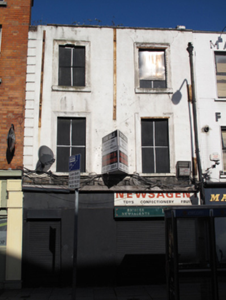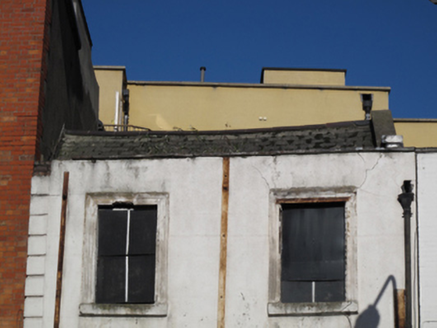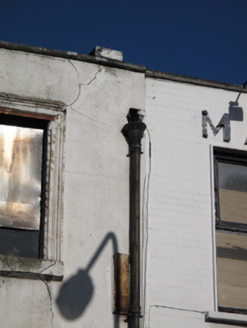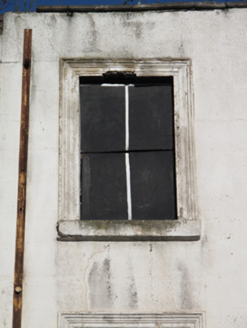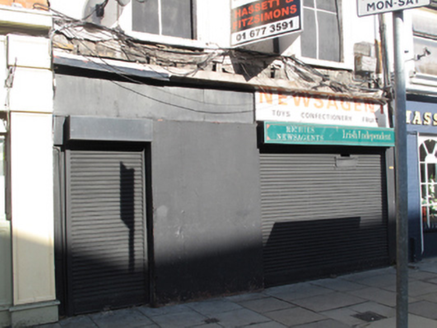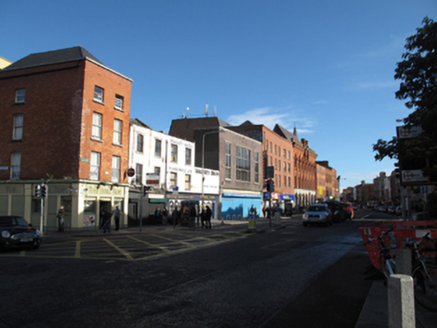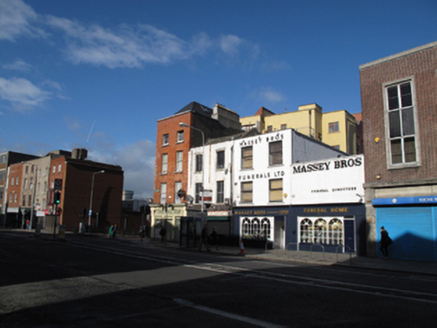Survey Data
Reg No
50080614
Rating
Regional
Categories of Special Interest
Architectural
Original Use
House
Historical Use
Shop/retail outlet
Date
1635 - 1645
Coordinates
314543, 233914
Date Recorded
11/11/2013
Date Updated
--/--/--
Description
Attached two-bay three-storey house, built c.1640, having recent shopfront to front (south) elevation. Pitched artificial slate roof with render coping, rendered parapet having masonry coping, cast-iron rainwater goods. Lined-and-ruled rendered walls, channelled quoins to west of façade, brick visible over shopfront. Square-headed window openings with moulded render architrave surrounds, painted masonry sills, blocked. Door opening leading to upper levels, to west of shopfront. Retaining significant interior features including corner fireplaces and staircase with barley sugar balusters.
Appraisal
Dublin Civic Trust's 'Survey of Gable-Fronted and Other Early Buildings of Dublin City,' 2012, states 'Despite its very poor condition, this former early house retains a remarkable wealth of original fabric to the interior including one of the handful of c.1700 timber staircases surviving in Dublin. The plan, scale and joinery detailing clearly place this building in the category of early post-medieval building, the original form of which - whether gable-fronted or dormer-roofed - has yet to be full determined. With the exception of No.101 North King Street, Dublin 7, there are probably no other vernacular buildings of this diminutive size, early date and relative intactness left in Dublin city.' Thom’s Directory of 1862 lists this as the property of Pat Connor, salt merchant. By 1913, it was in use as tenements. Thomas Street developed as a commercial street as a result of its location between the city walls and the rural hinterland, with several markets located here for the sale of produce. Since the time of survey, works undertaken have revealed that the staircase reuses oak whose felling dates to 1471. The oak may have been salvaged from the Augustinian Priory of St. Thomas on the opposite side of the street. The corner fireplaces retain much of their original seventeenth century brickwork.

